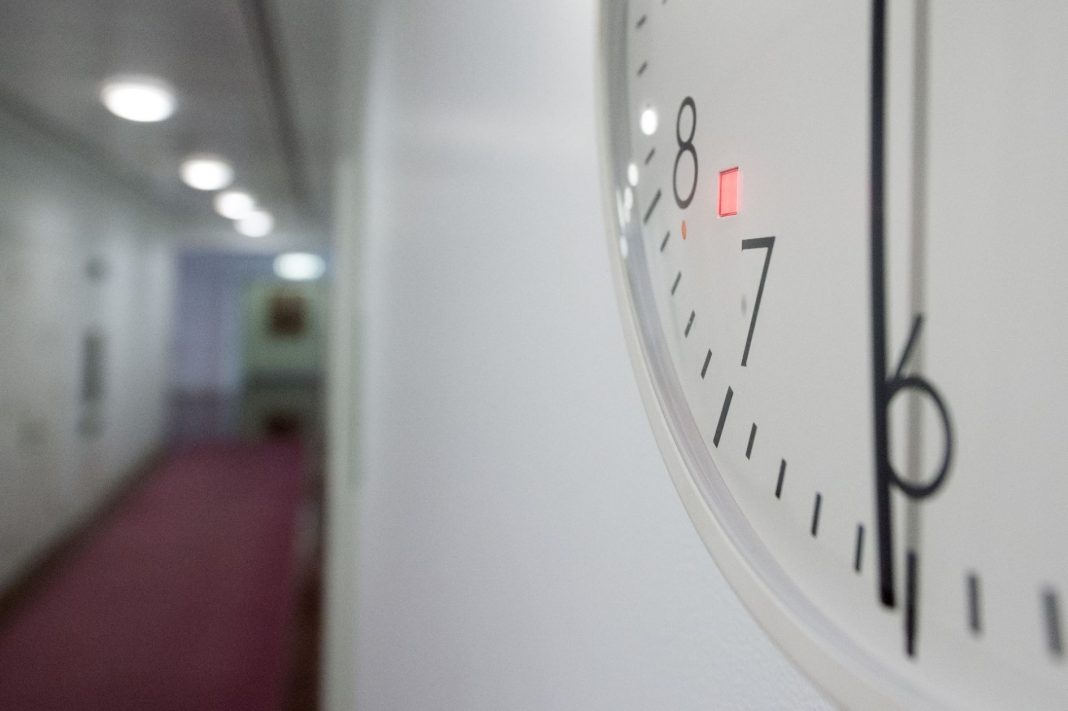As Daylight Saving ticks over this Sunday at 2am, spare a minute to consider the flawless synchronisation of 2,700 analogue clocks automatically jumping to 3am at Parliament House. If it wasn’t for cutting-edge technology, Daylight Saving would be a nightmare.
Just ask the maintenance crew, which takes seven years to service all of the clocks. Thirty clocks are taken down each month for repairs or maintenance. By the time they’ve serviced all 2,700 clocks seven years later, they have to start all over again. A bit like painting Sydney Harbour Bridge.
Time is of the essence at Parliament House, and there is nowhere in the building that parliamentarians can stand without a clock in sight. According to senior guide Luke Hennessy, when the corridors are empty, the jarring sound (somewhere around 75dB) of so many second hands ticking over is “amazing”.
“Our outer corridors at Parliament House are 300 metres long and right down the middle there’s so many clocks and when the second hands tick over at the same time, it’s almost like a Wes Anderson movie,” Luke said.
If the constant ticking doesn’t drive you up the wall, the bells connected to each clock (to signal a vote or division in the House of Representatives or the Senate) will. There are 9,000 speakers throughout Parliament House – even in the loo.
“You can’t escape the sound of the bell,” Luke said. “Parliamentarians will have four minutes to get from wherever they are in the building to the chamber. Sometimes they’re outside doing exercise and there is footage of former Prime Minister Tony Abbott running into the chamber in his jogging gear.”
The only place in Parliament House that has no bells (just clocks with flashing red or green LED lights to signify which chamber) is the childcare centre. You do not want to wake a sleeping baby. Incidentally, the Parliament House childcare centre used to be a pub but was changed in 2008 by the then leader of the house, Anthony Albanese. It takes a brave man to close down a pub.
Back to the clocks. Deep in the dark basement of Parliament House, there is a “master clock” that keeps the 2,700 “slave” clocks synchronised. The master clock (which resembles a computer hard drive rather than an actual clock) takes its time reference from a satellite using a GPS antennae.
The master clock – considered part of the building’s critical infrastructure – must never experience an outage of longer than 48 hours and is backed by a response team that can respond within 60 minutes of a problem.
Old Parliament House down the road is a little simpler, with only 900 or so analogue clocks, which are slaves to no-one.
Luke said the master clock at Parliament House used navigation satellites that have extremely precise atomic clocks onboard.
“They use the oscillation of the atom as their metronome and it’s the most accurate time reference technology that has ever been developed,” he said.
Luke is no horologist but his knowledge of Parliament House is impressive. No surprise given that he used to be a lecturer in politics at ANU and UC, and his father was involved in the construction of Parliament House and later worked in security, then as a chamber attendant, then in Hansard.
He even informs me that, technically, there are actually 2,701 important clocks in Parliament House. There is a “gender-equity” clock of sorts in the marble foyer (first floor). It’s a grandmother clock (not a grandfather) and we know this because it has a skirt at its base and a carving of a woman’s face. It was gifted to Parliament House by the very progressive Netherlands in 1988. It is no slave to the master clock (women’s rights) and staff have to wind the clock once a week.
Don’t forget to put your clocks forward (from 2am to 3am on 1 October).
To celebrate the 35th anniversary of Australian Parliament House, there is an open day on Sunday 8 October 9am-5pm. Free entry. Visit www.aph.gov.au/Visit_Parliament/Open_Day_2023 for more details.
Canberra Daily is keen to hear from you about a story idea in the Canberra and surrounding region. Click here to submit a news tip.



